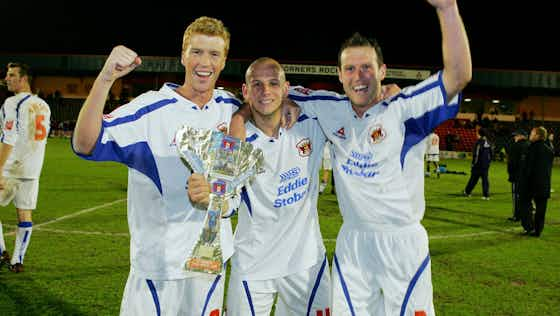Football League World
·11 May 2025
The 2004/05 arrivals defined a generation at Carlisle United

In partnership with
Yahoo sportsFootball League World
·11 May 2025

Carlisle could do with another season of recruitment like the one they had two decades ago.
20 years on from their escape from the non-leagues, Carlisle United have been relegated back out of the EFL for just the second time in their history.
The 2024/25 season has some parallels to the last time the Cumbrian side played in the fifth tier of English football. They went into both seasons off the back of a relegation. They had Paul Simpson as their manager at the start of both with an ambition to be promoted. They both needed to have a strong season of recruitment in order to give themselves a good chance of doing so.
The more recent version of that story played out horribly. Simpson only lasted four games before being sacked, and then his predecessors failed to repair the wreckage that had been left behind, which ultimately sunk the ship that a lot of Carlisle supporters felt at the start of the season wouldn't be sunk, not for a second time in a row.
The first time the Blues had Simpson at the helm they came good on all of those aforementioned statements. They limited themselves to just one season outside the football league by winning the play-offs against Stevenage, thanks to Peter Murphy's goal in the 23rd minute, at the Britannia Stadium on 14th May, 2005, cementing the club's EFL revival.
Where the Blues really thrived that season was at the back, a trait that was later carried over to Simpson's second promotion-winning tenure. They were the best team in the Conference at keeping balls out the back of the net, only conceding 37 goals in 42 matches.
Karl Hawley acted as their primary scorer in the 04/05 campaign, although that responsibility was fairly evenly shared as he only netted 13 of Carlisle's 74 league goals.
This defensive stability that they displayed in the Conference then carried over to the next season, when they allowed just 42 goals in 46 matches. It combined with a scoring surge - they put 86 goals past their opponents that season - to propel United to the top of League Two, their second successive promotion, as well as to the EFL Trophy final, where they unfortunately lost 3-2 to Swansea City.

Reaching League One wasn't unbelievably surprising given how Carlisle had finished the 2003/04 season in essentially promotion-pushing form despite their relegation. 2006/07, however, was a bit more of a surprise.
That summer the club lost Simpson to Preston North End, and yet the upwards trajectory continued under Neil McDonald.
United landed themselves in eighth place in their first term back in the third tier and then took things a step further, moving up four spots in the subsequent season. It was the biggest golden period that the club has had this side of the millennium.
Murphy, whose header started Carlisle's mid-2000s promotion run, was signed a few seasons earlier, but much of the spine of Simpson's side was made up of players that had been acquired throughout that period in the Conference.
Hawley, Simon Hackney, Derek Holmes, Danny Livesey, Chris Lumsdon, Kieren Westwood: all of them were brought in across a 10-month period and they went on to define a generation at Brunton Park.
Even someone like Glenn Murray who didn't play for the Blues all too much during his tenure with his home county's biggest club, especially compared to what he'd go on to do in his career, was signed that season from Barrow.
It's the type of business that any club would dream of having. The more regular movement of players nowadays, especially in the lower leagues, makes it much harder to build a core like Carlisle had back then, but it can certainly serve as inspiration for the modern day Blues who, like their predecessors, are looking to escape the grasp of the National League at the first time of asking.


Live




Live




Live




Live




















































